Raising a Rottweiler puppy is no walk in the park—it takes serious commitment! But don’t worry, we’ve got your back. We know Rottweiler owners want to see their pups grow into strong, healthy dogs.
That’s why we’ve created the ultimate guide to Rottweiler puppy weight so you can track your furry friend’s development. We’ll dish on ideal weight milestones, what factors impact growth, and give tips on diet, exercise, and more.
You’ll be an expert on your Rottweiler’s health in no time! So get ready to follow along on your pup’s journey from tiny furball to confident canine with our complete Rottweiler Puppy Weight Chart in Kg!
Rottweiler Puppy Weight Chart in Kg: Track Your Puppy’s Growth
Monitoring your Rottweiler puppy’s weight and growth is one of the best ways to ensure they stay happy and healthy as they mature. But all those pounds and kilograms can be confusing! That’s where a handy Rottweiler puppy weight chart in kg comes in.
This puppy weight chart outlines the average size and weight in kg you can expect at each stage of your Rottweiler’s development during their first year:
8 Weeks Old
At 8 weeks old, which is the typical age for checking a rottweiler 2 months puppy weight in kg, your adorable Rottweiler puppy will weigh between 4-6 kg.
This is a healthy range for pups at this stage, and they should roughly double their birth weight by this time. Their rapid early growth spurt means they need plenty of extra calories from nutrient-rich puppy food to keep up with their development.
3 Months Old
By 3-month-old rottweiler weight in kg will be approximately 15 kg. Their weight gain starts to slow around this point as they are weaned off mother’s milk. You can transition to 2-3 meals per day at this 3-month-old stage.
6 Months Old
At 6 months, your juvenile Rottweiler will weigh about 32 kg. Their growth continues steadily during this period. Make sure to keep up with exercise needs. Walks, training, and socialization are important for development.
9 Months Old
Around 9 months of age, your maturing Rottweiler puppy will weigh around 42 kg. They are filling out but still have some slight growing to do. Monitor calories to avoid excess weight gain during this adolescent stage.
12 Months Old
By a year old, your Rottweiler will weigh approximately 50 kg for males and 42 kg for females. Congrats, your puppy is now a full-grown adult dog! Their growth plates have closed and weight gain levels off after the first year.
Of course, these numbers are just averages – the actual weight of your Rottweiler puppy weight chart kg can vary based on several factors:
- Gender – Male Rottweilers are larger than females, reaching bigger sizes.
- Genetics – Some bloodlines tend to run larger or smaller than the breed standard.
- Nutrition – A healthy, balanced diet supports ideal growth.
- Environment – Things like exercise routines impact development.
- Health Issues – Illness or conditions may affect growth.
While the rottweiler weight chart kg provides a general guideline, it’s best to consult your vet to monitor your specific puppy’s development and rottweiler weight in kg. Track their growth against the averages using a scale at home. Rapid changes in weight can signify potential issues.
Keeping your Rottweiler at a healthy size will set them up for a long, comfortable life as your loyal companion. Use this Rottweiler Puppy Weight Chart in Kg as a helpful resource along the exciting journey of puppyhood!
Feeding Your Growing Rottweiler Puppy
Diet plays a crucial role in your Rottweiler puppy’s growth and development. Feeding a nutritious, balanced diet in the right amounts and intervals will help your puppy reach a healthy weight per the Rottweiler Puppy Weight Chart in Kg. Follow these feeding tips:
Transition from Mother’s Milk
For the first 8 weeks, Rottweiler puppies will nurse milk from their mother. Their nutritional needs change as they are weaned off mother’s milk. Slowly introduce soaked kibble mixed with warm water or puppy formula between 3-4 weeks old. By 6-8 weeks, they should be fully weaned onto solid puppy food.
Choose a High-Quality Puppy Food
Select a reputable brand of dry or wet puppy food formulated specifically for large breeds like Rottweilers. Look for a statement from the Association of American Feed Control Officials (AAFCO) to ensure complete nutrition. Prioritize these ingredients:
- Protein – Puppies need higher protein levels for muscle growth, usually around 22% minimum.
- Calcium/Phosphorus – These minerals support bone development, but levels should be monitored to prevent abnormalities.
- DHA – Helps brain and vision development.
- Glucosamine – Maintains joint health.
- Vitamin D – Important for calcium absorption.
Avoid fillers like corn, wheat, soy, and by-products.
Feed 3-4 Small Meals Per Day
Until 6 months old, Rottweiler puppies should eat 3-4 meals per day. Their small stomachs can’t handle large portions. Feed at scheduled times rather than free-feeding. As they transition to adult food around 1 year old, decrease to 2 meals per day.
Follow recommended serving sizes based on your puppy’s age and weight. For example, a 3-month-old Rottweiler puppy weighing 15 kg may eat around 330 grams of food per day, split into 3 meals. Monitor their weight and adjust portions to maintain an ideal growth trajectory.
Provide Plenty of Fresh Water
Make sure your puppy has unlimited access to fresh, clean drinking water to stay hydrated. Change the water frequently throughout the day.
Avoid Overfeeding
It’s tempting to overfeed puppies, but limiting portions is important to avoid obesity issues. Follow your vet’s advice and the Rottweiler Puppy Weight Chart in Kg to avoid excess weight gain.
Supplement When Needed
Some large breed puppies benefit from glucosamine, chondroitin, and omega fatty acids supplements to support joint, brain, eye, heart, and immune system health. Check with your vet.
Following these feeding guidelines ensures your Rottweiler puppy gets all the nutritional support they needs for healthy growth on their way to reaching their ideal adult male rottweiler weight kg.
Exercising Your Rottweiler Puppy
Exercise is essential for your Rottweiler puppy to develop healthy muscles joints, and reach a proper weight as per the Rottweiler Puppy Weight Chart in Kg. Follow these exercise tips:
Take Short, Frequent Walks
Young Rottweiler puppies tire quickly, so take multiple short walks per day rather than one long one. A suitable rule of thumb is 5 mins of exercise consistent with month of age at a time. For instance, a three-month vintage domestic dog can cope with 15-minute walks. Increase duration as they grow.
Keep walks gradually paced. Don’t encourage leaping or jogging on tough surfaces that would injure tender pup joints. Grass, dirt trails, or soft surfaces are ideal for playtime.
Prioritize Training and Socialization
The walks are also a chance to socialize your pup and exercise education competencies like leash manners. Expose them to new attractions, sounds, people, and dogs in a relaxed, wonderful manner. Attend pup kindergarten lessons for structured socialization and training.
Prevent Joint and Bone Issues
Some large breed puppies like Rottweilers are liable to joint dysplasia, osteochondritis dissecans, and hypertrophic osteodystrophy. Avoid overexercising at a young age to prevent these limb issues. Don’t encourage leaping on or off furniture.
Wait till at least 18 months vintage to introduce intense exercise like running, agility, or trekking. Let those growth plates close earlier than repetitive effect activities.
Provide Indoor Play Opportunities
In addition to out-of-doors exercising, make sure your Rottweiler domestic dog gets masses of playtime indoors each day. Interactive toys and chews assist in stimulating their thoughts and bodies. Hide and try to find video games that provide intellectual stimulation. Tug toys are incredible for bonding.
Just be cautious of slippery floors that could motivate falls and injury. Provide carpeted surfaces for indoor play zones.
Adjust with Age
As your Rottweiler pup a while, their exercise wishes and bounds will exchange. Monitor their electricity ranges and regulate period and depth as it should be. Don’t go over or underneath the workout. Vary activities to save you boredom.
Consult your vet when you have any worries about suitable exercise for your doggy’s age and weight. They can provide customized steerage on preserving premier health and boom.
Following these exercising quality practices will maintain your Rottweiler bodily and mentally enriched at the same time as shielding their developing joints in the manner to attain their ideal personal weight and size.
Training a Rottweiler Puppy
Training and socializing your Rottweiler puppy early on is critical for elevating a nicely behaved dog that reaches their best personal weight and temperament. Focus on those education regions:
Crate Training
Crate schooling makes use of a pup’s instinct to den. It’s a vital approach for housebreaking, preventing adverse behaviors, and managing an active Rottweiler puppy.
- Choose the proper sized crate – just massive enough for them to rise and flip around.
- Make it snug and den-like with blankets and toys.
- Use treats and rewards to reward going into the crate.
- Slowly growth period inside the crate during the day and at nighttime.
- Avoid the usage of the crate completely for punishment to save you terrible associations.
With patience and consistency, your Rottweiler pup will see their crate as a secure space for resting and relaxing.
Potty Training
Housebreaking a Rottweiler pup calls for diligence and habit. Set them up for achievement by:
- Taking them out frequently – about every 30-60 minutes plus after eating, playing, and waking up.
- Praising and rewarding with treats for outdoor potties to reinforce the behavior.
- Sticking to a predictable feeding and potty schedule.
- Confining them when unsupervised – crates and tethering prevent accidents.
- Cleaning all accidents thoroughly with enzymatic cleaner to remove odors.
Expect the process to take a few months. Be patient and consistent.
Bite Inhibition
Rottweiler puppies are mouthy dogs. Training bite inhibition curbs nipping and mouthing.
- Redirect biting onto chew toys instead of hands and ankles.
- End all play if they start to mouth skin.
- Use reverse timeouts if needed until they calm down.
- Teach them to be gentle with treats in hand to take nicely.
With age and training, your Rottweiler puppy’s needle-sharp milk teeth will fall out, and biting will subside.
Basic Obedience
Start mastering basic obedience commands like sit, stay, come, down, leave it, drop it. Keep training sessions short and upbeat with plenty of praise and rewards for success. Use treats, clickers, and other motivators.
Formal puppy obedience classes are also great for socialization and instilling manners. A well-trained Rottweiler who respects you as a leader makes for an ideal companion.
Raising a happy, healthy Rottweiler puppy takes a lot of time, consistency, and patience. Starting training and socialization at an early age will help prevent problem behaviors when puppies reach their adult weight and temperament.
Conclusion
We hope this complete guide to the Rottweiler Puppy Weight Chart in Kg has given you the knowledge needed to help your puppy grow into a happy, healthy dog! Let’s recap some key points:
- Use the Rottweiler puppy weight chart as a general guideline for growth milestones during the first year. Monitor your specific puppy’s development.
- 8-week-old puppies weigh 4-6 kg, 3-month-old puppies weigh around 15 kg, 6 months around 32 kg, and 1 year around 50 kg for males and 42 kg for females.
- Feed high-quality large-breed puppy food with appropriate protein, vitamins, and minerals. Feed set portions 2-4 times per day.
- Prioritize socialization, training, and bite inhibition from an early age. Crate training and routine are essential.
- Exercise puppies daily with short walks, training sessions, and playtime. Avoid excessive exercise to prevent joint issues.
- Track your puppy’s rate of weight gain. Consult your vet if their growth strays outside the averages.
- Spay/neutering can affect growth plates, so talk to your vet about ideal timing.
- Not all Rottweiler puppies will perfectly match the averages. Genetics, diet, environment, and health impact development.
While raising a Rottweiler puppy requires a lot of work, the payoff of having a loyal, well-trained companion for life is priceless! Continue providing expert care as your puppy reaches their full adult size and weight.
If you found this manual useful, be sure to load down our loose printable Rottweiler Puppy Weight Chart in Kg to keep monitoring your doggy’s progress! Just click the link below to download the PDF. And test out our weblog for extra hints on Rottweiler doggy fitness, training, and vitamins!
Frequently Asked Questions
What is the average female Rottweiler’s weight?
- The average female Rottweiler weight is 38-59 kg (85-130 lbs)
What is the average male rottweiler weight?
- The average male Rottweiler weight is 50-60 kg (110-135 lbs)
How much does a rottweiler weigh?
- A Rottweiler’s average weight is 45-60 kg (100-135 lbs).
What is the average weight of a rottweiler?
- The typical Rottweiler weight ranges from 38-68 kg (85-150 lbs).

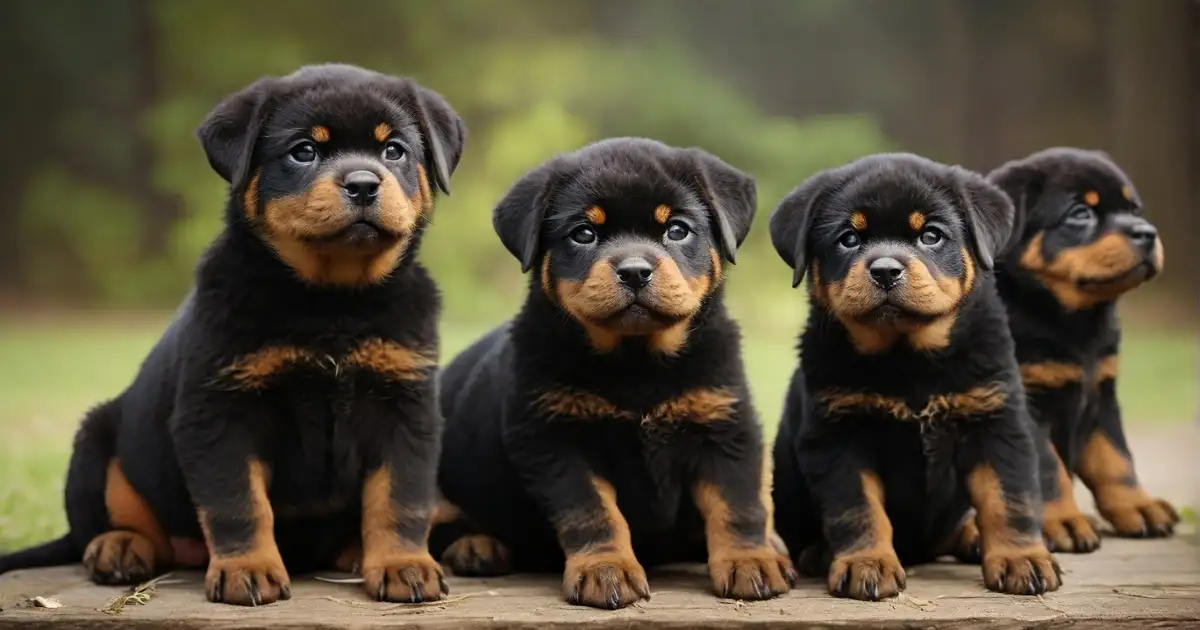
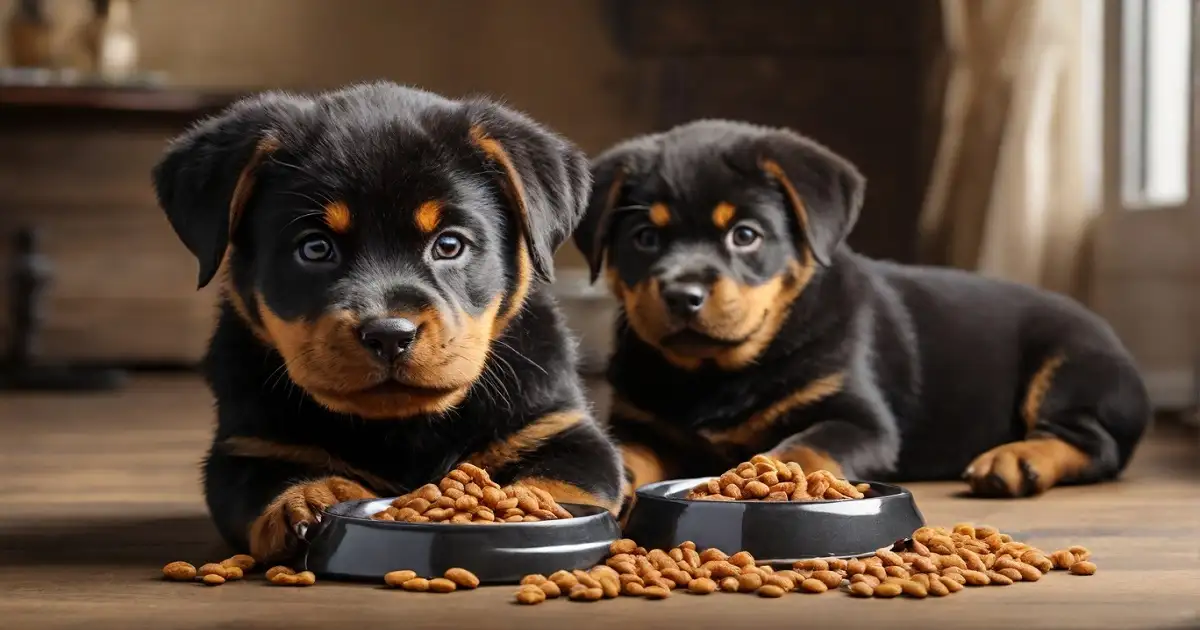
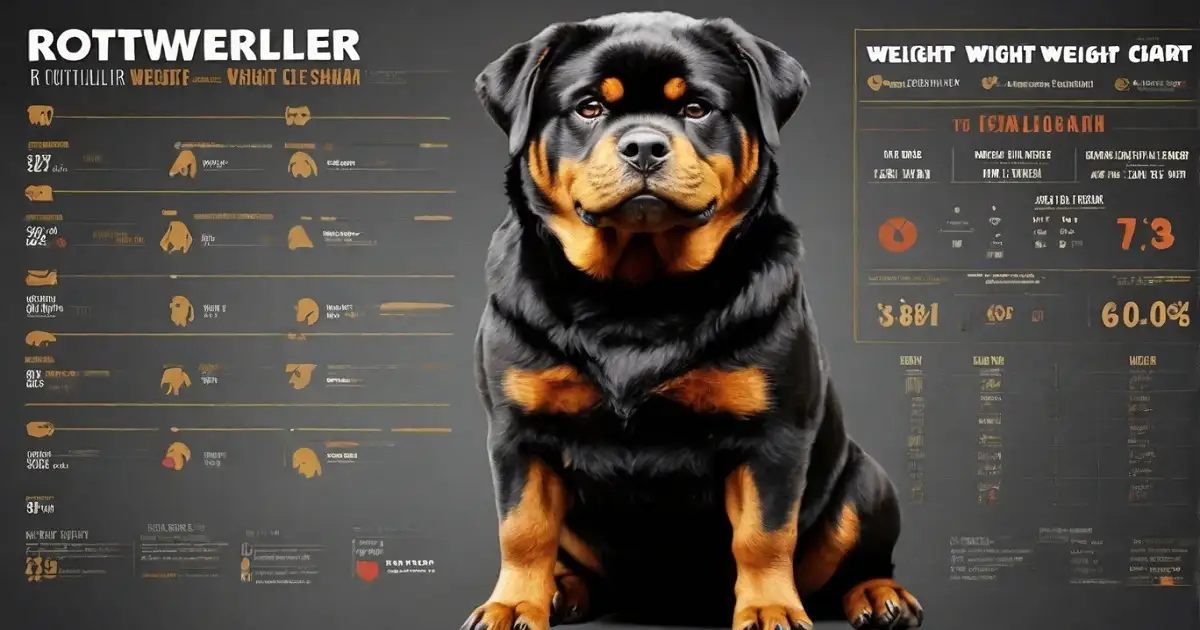
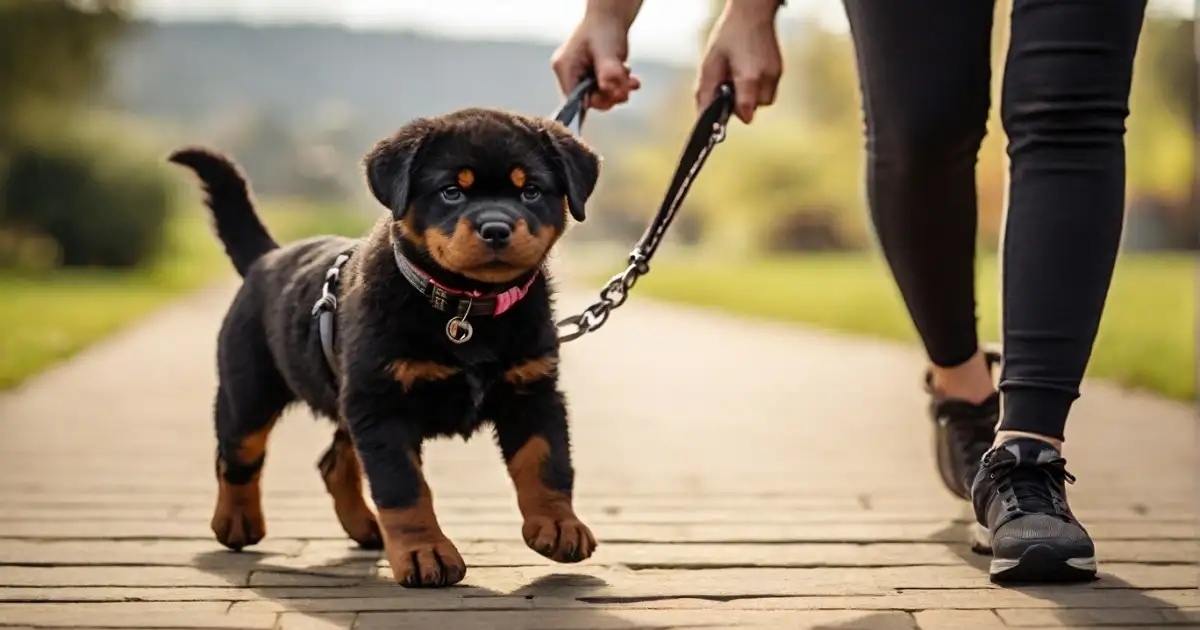

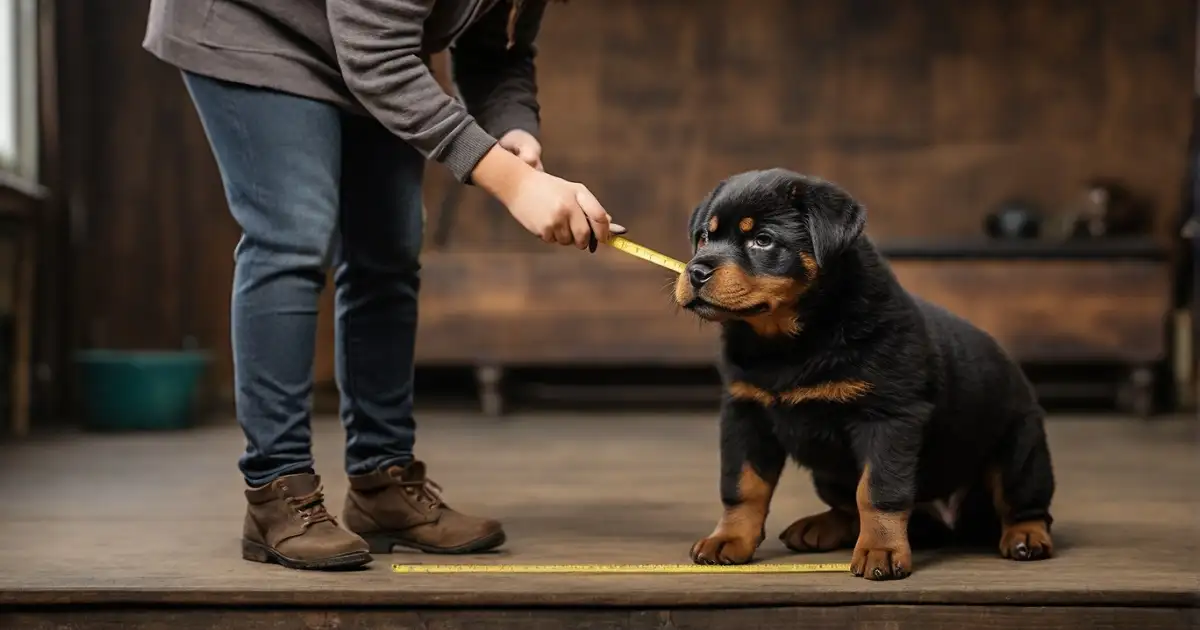


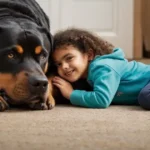
1 thought on “Rottweiler Puppy Weight Chart in Kg: Discover The Ideal Milestones And Healthy Growth.”